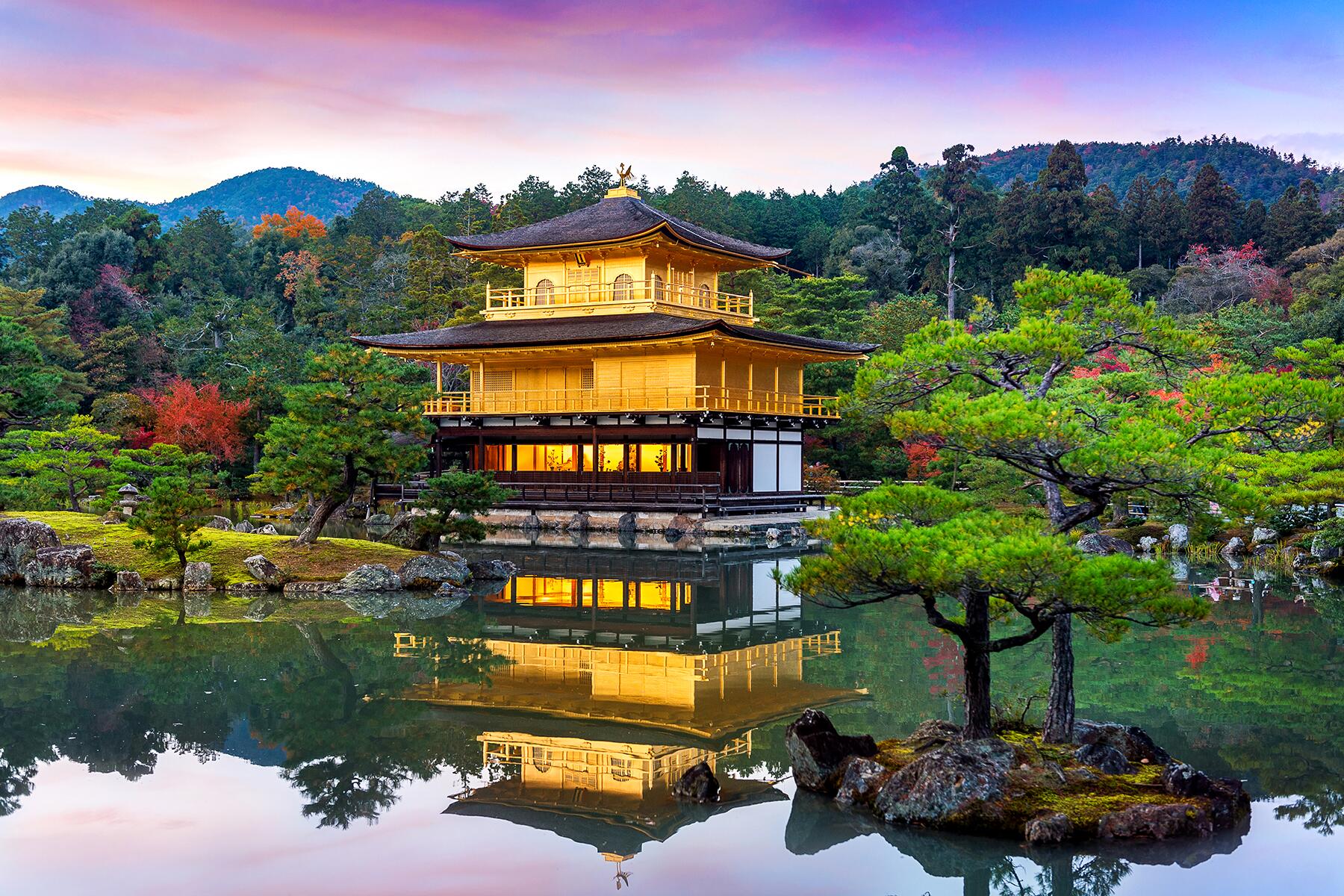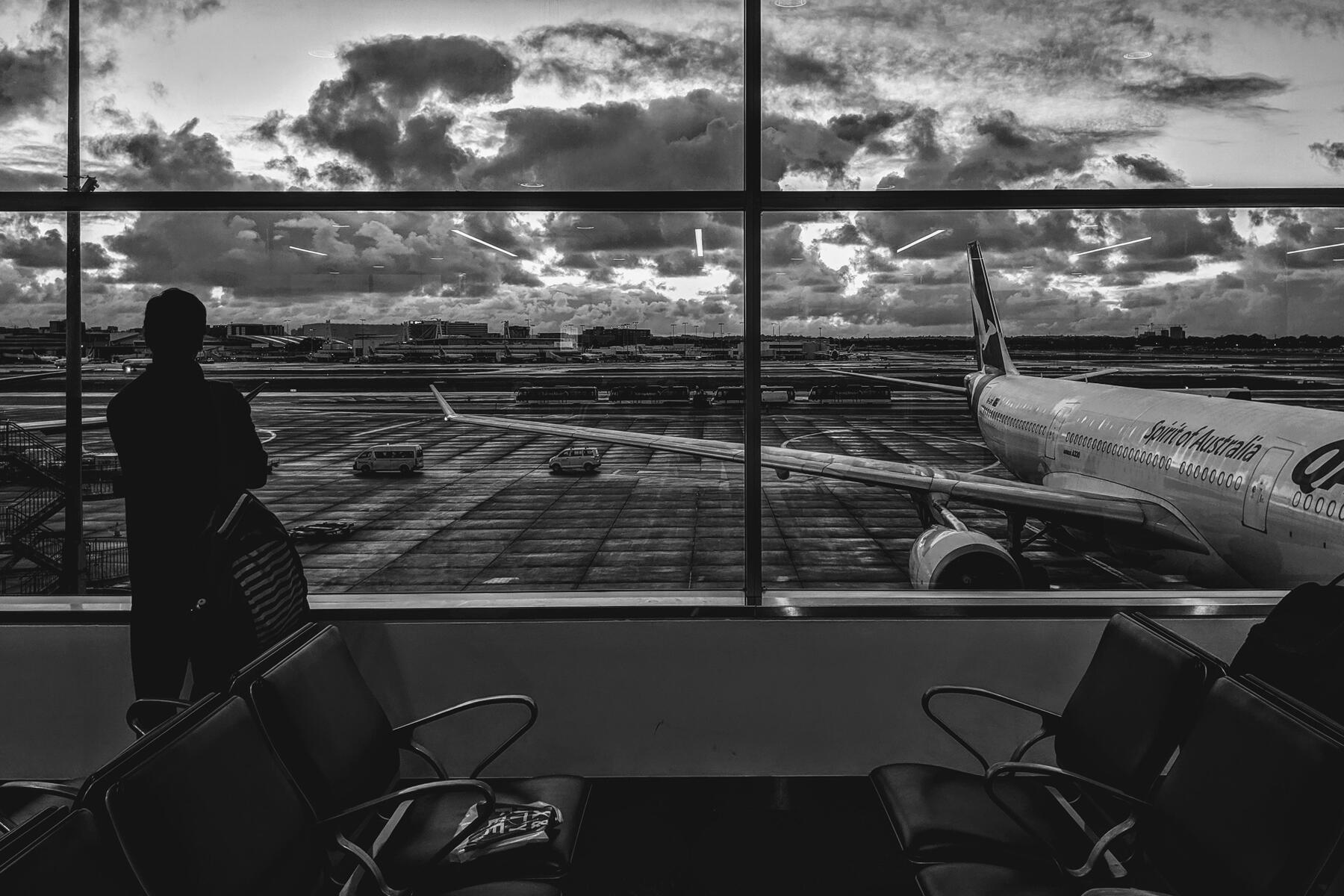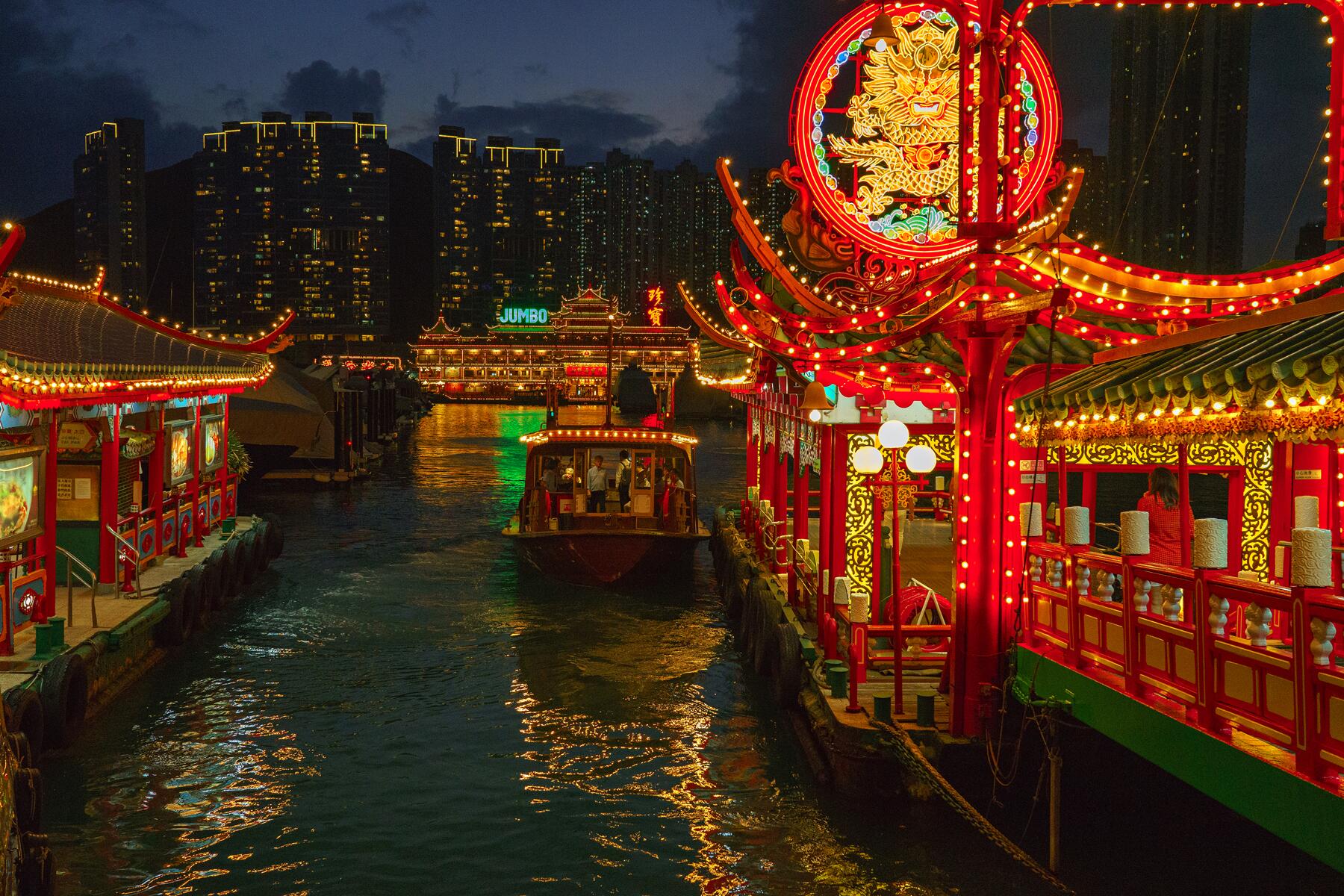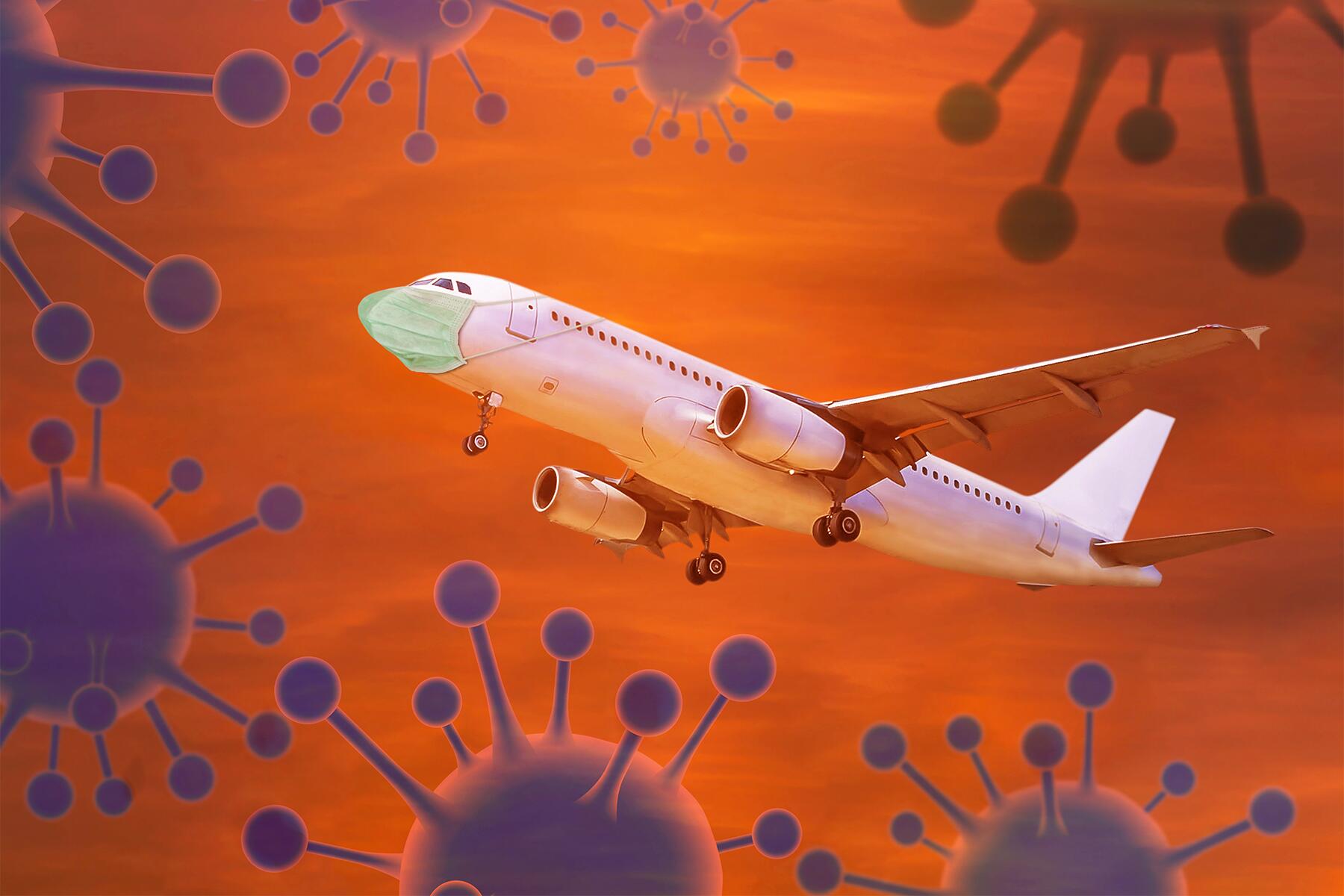OK, first we’re gonna need to redefine “all over.”
We completely agree with Kappner Clark of RLH Properties in Mexico: “I think most people will be wanting and needing a vacation after all of this.” While the COVID-19 pandemic is the perfect time to start planning a trip, we still need to wait for the green light to actually go to all the wonderful destinations in the world (let alone just dine at the restaurant down the street). Here’s how we’ll figure out when it’s safe to travel again and when #TravelSomeday can revert back to #TravelAnyDay.
What Does Safe Even Mean?
Of course, each of us is concerned about getting COVID-19 ourselves, but “yes, it’s safe to travel” doesn’t just mean that you won’t catch the virus or that you’ll probably have only a mild case. It means that everyone around us—on the plane, in the museum, at the café, and in the communities of every person who enjoys or works in travel—is safe from contracting the virus, too. And that will take a while.
Health officials’ calls to #FlattenTheCurve are about slowing the spread of COVID-19 so that health systems can handle treating the resulting illnesses and deaths. But a flat curve doesn’t mean the disease is gone or that it’s safe to return to normal, it just means that infection has slowed enough not to overwhelm hospitals.
In order for us to be safe from contracting and spreading COVID-19, about 70% of the world’s population needs to be immune to it. This will happen when a vaccine is available in every country (which is unlikely until mid-2021) or when enough people have recovered from COVID-19 and developed sufficient antibodies. Until then, the virus will continue spreading.
For regular activities, including travel, to be safe again, we need both a flat curve and an R0 that’s lower than one. R0 (pronounced “R naught”) is a measure of the contagiousness of a disease. It’s based not only on the nature of the virus itself but on the individual and collective behaviors of the affected population, like whether we practice physical distancing or frequent 20-second handwashing.
We don’t yet know COVID-19’s R0, but various studies estimate it’s between two and three and maybe as high as 5.7. An R0 of three means one infected person gives the virus to three other people, and then the disease spreads exponentially. When the R0 is lower than one—meaning that, on average, one infected person infects less than one other person—the infection rate will slow and the disease will die out.
Initiatives like lockdowns and avoiding nonessential travel are lowering COVID-19’s R0, allowing countries to flatten their curves and get their health systems better ready to combat the disease. But experts worry that the R0 will rise again as lockdown restrictions are lifted and we try to return to normal life.
Second, third, and subsequent waves of infection are likely—second waves are already underway in Japan and Singapore, countries that seemingly had the disease under control. Renewed lockdown periods will be needed to curtail new waves of infection. USA Today describes a study that says that COVID’s second wave could be worse than what we’re experiencing now, and Harvard researchers predict that intermittent physical distancing measures will be needed into 2022.
There’s a Difference Between Believing You’re Safe and Being Safe
COVID-19 is scary. We watch the number of cases and death tolls climb hourly, hear frightening stories of people of all ages with serious symptoms, and see our favorite destinations closed not only to tourists but to their own citizens. As individuals and societies, we’re learning how to protect ourselves from COVID-19. Every day we see new measures, like plexiglass screens at grocery stores and mandatory mask use on planes.
But there’s also widespread misinformation that’s increasing anxiety and making us feel less safe (for instance, the “study” on how runners supposedly spread the virus wasn’t actually a study at all). Matching how we feel to the facts and evidence is one of the biggest challenges of the 21st century. Populists have been alarmingly successful in reducing trust in science, experts, governments, and international institutions. We have a hard time changing our minds, even in the face of overwhelming evidence, once we believe something is true or when we want something to be true. Julio Vincent Gambuto makes the case why we should be wary of governments and marketers telling us that life should get back to normal again.
In order for us to be comfortable going out into our community, let alone travel, we need to believe that it’s safe. We need the right measures in place to protect us, we need to believe they’re the right measures, and we need to believe that people around us believe them and are implementing them too. That’s a tall order, especially when improving the economy and maintaining political power seemingly trump health and safety in many jurisdictions. Dr. William Spangler, Global Medical Director with AIG Travel, says “it is likely going to take some time for many people to feel completely comfortable in a public setting.”
Jamaica is already contemplating the psychology of travel safety. The country is now looking at tourism through a psychographic lens rather than through demographics. Instead of thinking about the differing travel interests of Boomers or Gen Z, Jamaica is looking at tourism for “Gen C,” the post-COVID generation. Jamaica wants to address the demands, concerns, and desired reassurances of travelers who now know a lot more about infectious diseases than they did last year. To help, “more than 7,000 Jamaican hospitality workers are currently enrolled in intensive training programs that will allow us to meet the needs of Gen C travel and deliver the latest in technology, service, and hospitality,” says Edmund Bartlett, Jamaica’s minister of tourism. Jamaica created the Global Tourism Resilience and Crisis Management Centre in 2019, which will host a now-virtual meeting of the UN World Tourism Organization in May to discuss travel in the COVID world.
Recommended Fodor’s Video
We Need Safety, but Not Safety Theater
Doctors, epidemiologists, psychologists, and organizational behavior experts are figuring out what changes are needed to actually make us safer and what makes us feel like we’re safe. Both are important.
But we need to avoid “safety theater.” The Atlantic, and many others, have made the case that the TSA is in the business of “security theater,” not security. Travelers do want reassurances from destinations (and from the modes of transportation we use to get there) that they’re taking reasonable precautions to protect us from COVID-19. But there are limits to what is reasonable and what will and will not improve safety.
We can’t expect sterilized planes and hotel rooms, and we can’t assume that chefs and waiters wearing gloves makes restaurants safe. We can’t forget that we each have a lot of control over avoiding infection, by diligently practicing the WHO’s advice to wash our hands, avoid touching our faces, follow respiratory hygiene, keep at least three feet from others, and stay home even if we have mild respiratory symptoms.
It’s still early days in understanding the novel coronavirus. We need to wait for the science to know which decisions are ultimately the right ones and not jump to conclusions over unproven studies, whether about how the virus spreads, testing, or treatments. We need to carefully monitor our collective actions to see how they affect disease transmission, and then alter our behaviors accordingly. Slow and steady is what’s going to win the coronavirus race. Our new normal will be a gradual lifting of lockdowns, careful monitoring, and reinstating restrictions when the evidence warrants.
For travel, especially leisure travel, that means starting slowly, first within driving distance of our homes, then stretching regionally and nationally, before internationally. “We understand people are seeking safety, trust, and flexibility from their travel destinations,” says Daniel Hostettler, the president of Ocean House Management Collection in New England. It comes down to instilling confidence and the travel industry wants to deliver it.
What About Immunity Passports?
We still don’t know if recovering from COVID-19 gives immunity to it or for how long. Patients in South Korea, China, and now Italy are testing positive again for the disease, weeks after recovering and testing negative. Quartz describes several theories why: inaccurate testing, inactive viral cells still being shed by the body, reinfection by another COVID-19 strain (scientists think there might be three different strains), or a flare-up by the reactivated virus (like the herpes virus flares up on occasion) that once again makes the person ill and contagious.
Tests may determine that a person has antibodies, but can’t determine the quality of them and whether they bring immunity or not. Physician Kira Newman explains various types of immunity, including the possibility of having minor or no symptoms but still being capable of spreading COVID-19. Neither do we know how long immunity will last: Time describes a study about other coronaviruses that showed SARS patients had antibodies for three years but MERS patients had antibodies for only one year.
Until this is resolved, “immunity passports”—as Chile started issuing on April 20 and many countries have under discussion—will give a false sense of security and may result in further disease transmission. A golden ticket to travel also leads to fraud, a black market, and income- and country-disparity in accessing immunity documentation.
A vaccine should, eventually, make travel safe (although it is possible we’ll never develop a vaccine). Thailand’s Bill Heinecke, Chairman of the Minor Hotels collection, says “people may go back to having to show that they’ve been vaccinated when they start traveling.” Many countries currently require proof of yellow fever vaccination, and it’s likely we’ll need to show COVID-19 vaccination certificates before we step on a plane too.
A New Normal?
We don’t need to wait until a vaccine is ready before it’s safe(ish) to travel. Travel is an essential part of economic recovery and healthy economies are part of protecting health. But COVID-19 means that we’ll have a new normal. We’ll need to continue to take precautions and we’ll likely have renewed restrictions, including to stay at home, when waves of new cases arise.
A “rapid assessment” of tourism and the COVID-19 pandemic was published in late April. The authors say that in order for restrictions to remain lifted and for some travel to be possible, countries need to be successfully meeting the conditions of the second of four phases, which is about three to eight months away. The article says local and domestic travel will come before international travel, and that, for example, Europeans will travel regionally within the EU before they fly to Asia.
Phase three comes once a vaccine is available. Phase four is once widespread vaccination has been achieved and research to prevent future pandemics (including the role of travel and tourism), is well underway. Only then will it be “safe” for global tourism to recommence.
We’ll likely have a new normal of ongoing vigilance against COVID and against other novel viruses. Viruses mutate frequently, which is why we keep getting sick from the common cold and why the flu vaccine changes every year. The Atlantic explains how “‘cold and flu season’ could become ‘cold and flu and COVID-19 season.’” As we should with climate change, we will need to pay much more attention to adapting our behaviors to minimize and prevent damage from infectious diseases.
What Post-COVID Travel Will Look Like
On April 28, the United Nations World Tourism Organization said 100% of global destinations now have some degree of travel restrictions, “the most severe restriction on international travel in history.” It will take time for these to lift.
As new waves of infection circle the globe, new restrictions could come at any time, even though public health experts reiterate that bans against travel and trade are ineffective. As with the travel bans and border closures that marked the beginning of the pandemic, some restrictions will be based on scientific evidence and some will be put in place more because they sound reassuring. A more effective disincentive for nonessential travel is mandatory quarantine upon arrival, as France announced on May 2. Perhaps we’ll see new businesses arise, providing 14 days’ worth of groceries and meals to (quarantined) hotels for anyone who needs or wants to travel.
Flight changes and cancelations will follow border closures and restrictions. While air travel has already begun increasing in the U.S., as Business Insider reports, some question whether it should. In an April 23 open letter to the U.S. secretaries for Transportation and Health and Human Services, the union representing U.S. flight attendants requested that they suspend “all leisure travel until the virus is contained” and to make masks mandatory. Most U.S. airlines are now making flight attendants wear face masks and starting to require that passengers do as well (for example, as of May 11 for American Airlines). Planes will be cleaner—American Airlines announced enhanced cleaning of their planes before every flight and will distribute sanitizing wipes and masks to passengers, when available. But these new measures mean planes will be on the ground longer, which is expensive, as is barring sales of middle seats to improve physical distancing. The Guardian described how airfares might rise by 50% if physical distancing rules remain in force.
Everywhere we go as travelers, whether it’s across town or around the world, will be different. Here’s what you can expect for post-pandemic hotels and restaurants. For at least several months, large events will still be on hold, and sports performed only for TV audiences. Going to a museum, beach, world heritage site, wildlife sanctuary, or theme park will be different too. For example, Orlando’s theme parks, closed since mid-March, may reopen in June but with capacity limited to 50% and physical distancing enforced in queues.
OK, but When This Is All Over, Will It Be Safe?
For some time to come, neither will the pandemic be “all over” nor will it be easy to travel “all over.” As travel slowly opens up, we’ll need to evaluate whether destinations are safe in a different way than we used to. Travelers will need to check travel advisories, border closures, quarantine measures, cancellation and refund policies, the fine print of their insurance, what’s open and closed, physical distancing rules, and how well people are following them (for example, when Florida reopened beaches they quickly became crowded). Individuals will need to ensure their behaviors minimize disease transmission. Being on vacation won’t mean we can relax safety measures.
COVID-19 has shown us that we as individuals are safest when our communities, cities, countries, and the world are safe. Ensuring that everyone in the world has access to COVID vaccines and treatments means we prevent the disease from spreading.
We need a global response to COVID-19. We will need to have a sense of both the current virus transmission rate (the R0) and how burdened the health system is in our home communities, the communities we want to travel to, as well as in the communities of the people we’ll come in contact with along the way. We’ll need to be especially careful about vulnerable populations and countries without robust public health systems. We need to carefully weigh the health risks and economic benefits that travel and tourism bring and to whom.
“All over” may be optimistic, but yes: we will travel safely again.






Was planning on going to Rome next year. I don't have two weeks to stay quarantined in a hotel before traveling in Italy. Does this mean travel will be restricted to the rich and retired? QWhat abnout the average person with only so much vacation time and money?